Posts Tagged: overwintering monarchs
Guess Who's Back?
"Guess who's back?" butterfly guru Art Shapiro, UC Davis distinguished professor of evolution and ecology, asked in his "posse" email today. "Guess, who's back?" has nothing to do with the catchphrases uttered by Arnold Schwarzenegger and ...
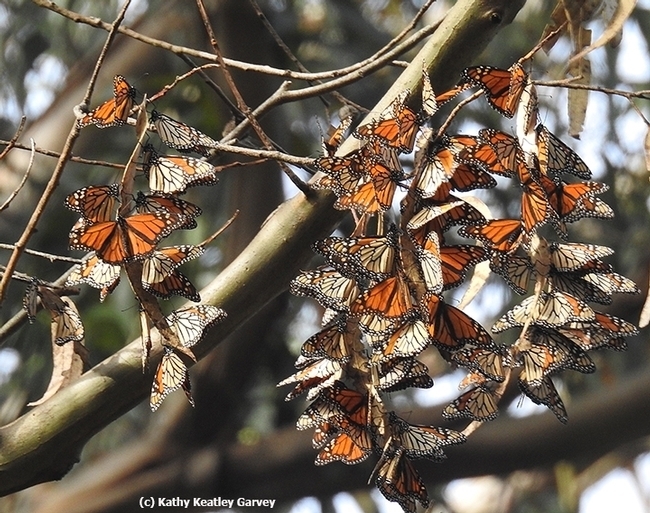
Monarchs overwintering in the Natural Bridges State Park, Santa Cruz, in 2016. (Photo by Kathy Keatley Garvey)
How Little We Know About Monarchs...
How little we know about monarch butterflies, Danaus plexippus... And how long misinformation can linger... Take the news about the overwintering 250,000 monarchs recorded along the California coast in the Western Monarch Thanksgiving...
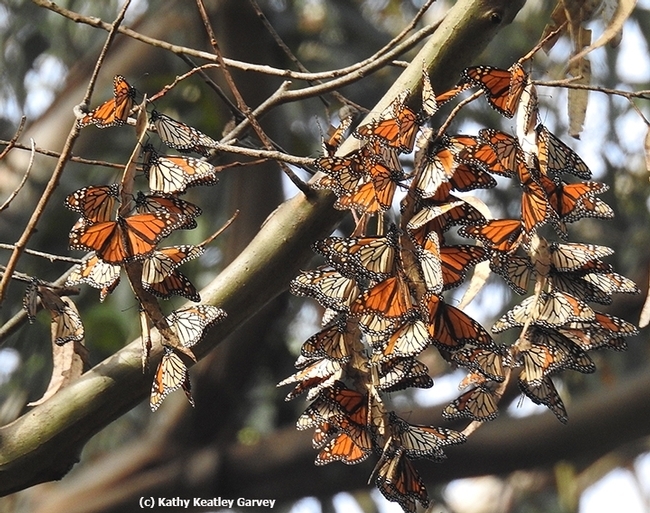
Monarchs overwintering in the Natural Bridges State Park, Santa Cruz, in 2016. (Photo by Kathy Keatley Garvey)
The King of the Butterflies on the Queen of Annuals
Is there anything more beautiful than a monarch butterfly, Danaus plexippus, nectaring on a Mexican sunflower (Tithonia rotundifolia) in the late afternoon sun? The brilliant orange and black butterfly, famous not only for its...
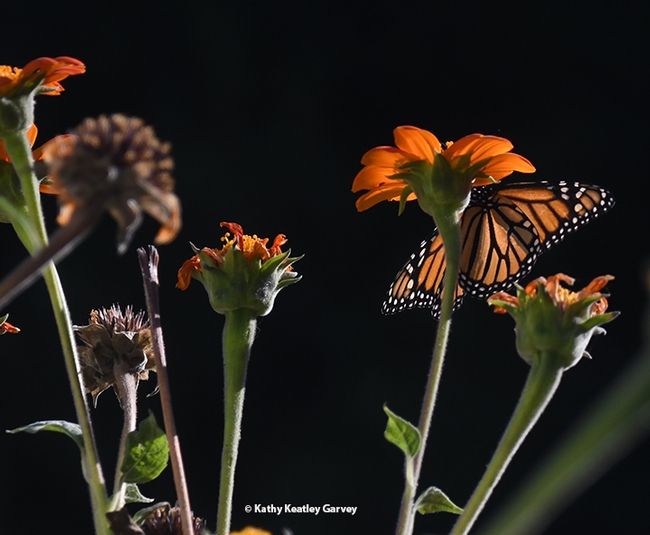
A monarch butterfly sipping nectar from a Mexican sunflower, Tithonia rotundifola, in Vacaville, Calif., on Oct. 30. (Photo by Kathy Keatley Garvey)
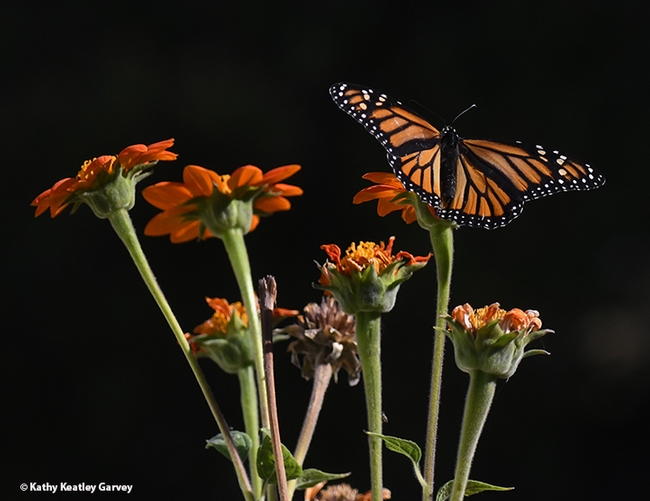
A monarch butterfly spreads its wings on a Mexican sunflower, Tithonia rotundifola, in Vacaville, Calif., on Oct. 30. (Photo by Kathy Keatley Garvey)
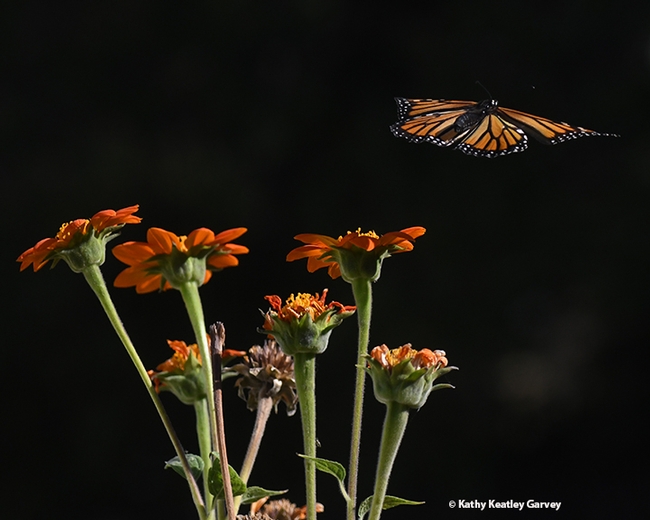
As striking as a stain glass window, the monarch takes flight. (Photo by Kathy Keatley Garvey)
Monarchs: You Can't Save Them All
Monarchs: you can't save them all. It was a dismal year in Vacaville (and other parts of California) for monarch-rearing. Of the 10 caterpillars we collected from milkweed in our pollinator garden in early September and tried to rear, only eight made...
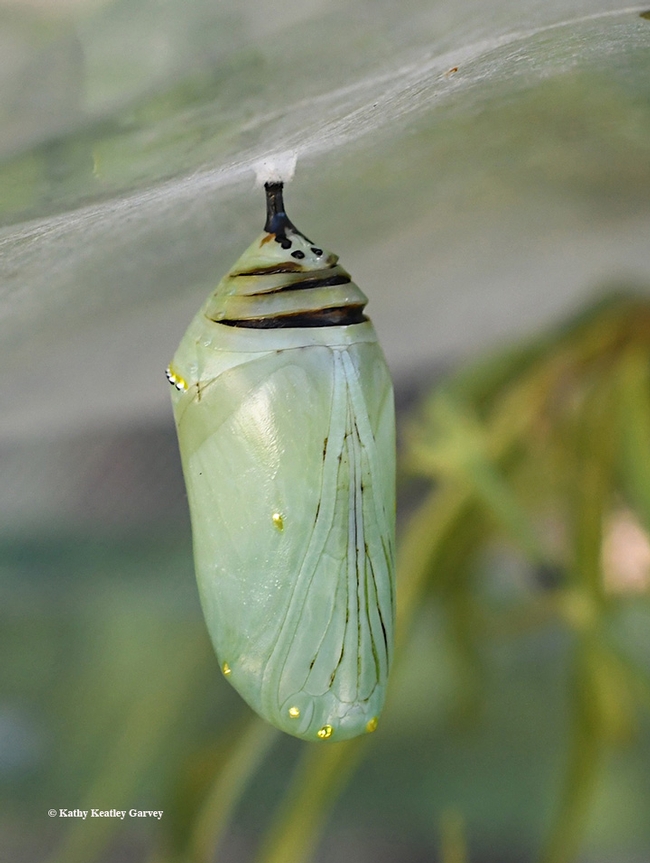
A monarch chrysalis that didn't make it. This image was taken Sept. 15. Said Art Shapiro of UC Davis: "The intersegmental membranes are showing. Whatever caused that, it opens the door to severe water loss, so the pupa will probably die." (Photo by Kathy Keatley Garvey)
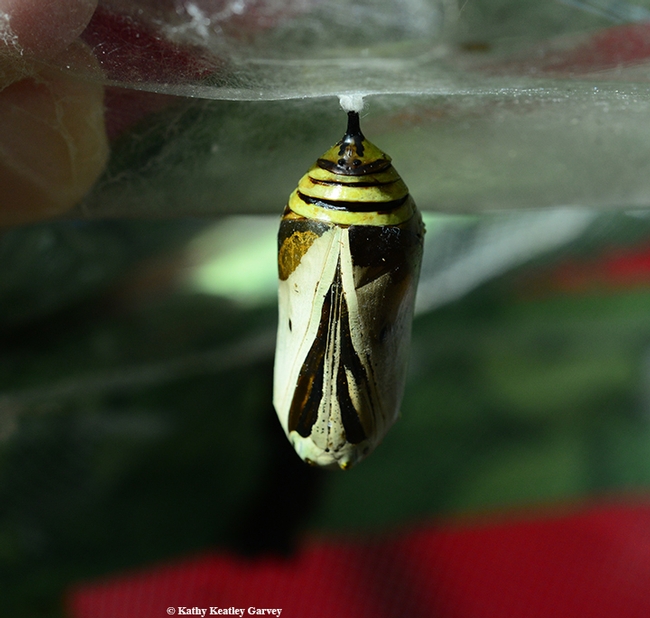
This is what the non-viable monarch chrysalis looked like on Oct. 10. (Photo by Kathy Keatley Garvey)
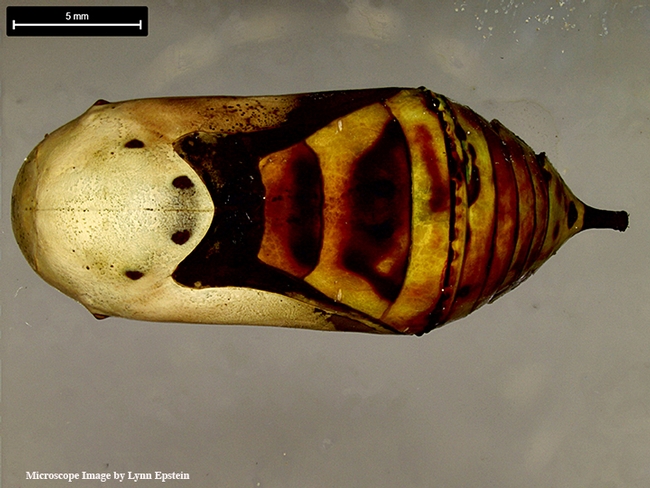
Lynn Epstein, UC Davis emeritus professor of plant pathology, captured this image of the monarch chrysalis on Nov. 2 with a Leica DVM6 microscope.
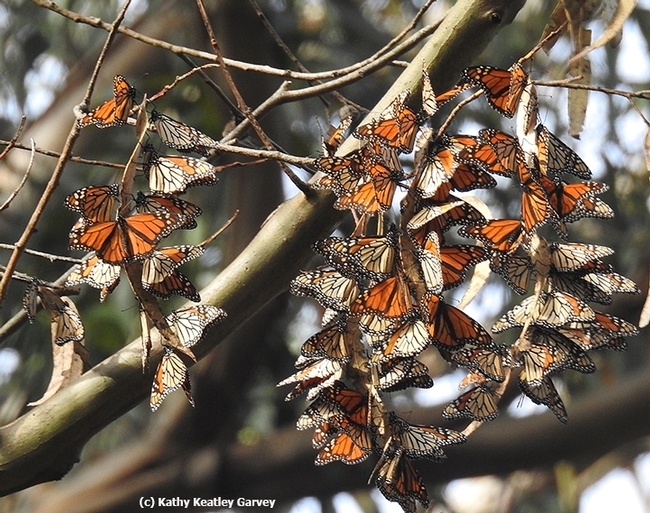
Monarchs overwintering at Natural Bridges State Park on Nov. 14, 2016. (Photo by Kathy Keatley Garvey)
David James' Incredible Research on Migratory Monarchs
Newly published research by entomologist David James of Washington State University, Pullman, Wash., in the Journal of the Lepidopterists' Society yielded incredible news about the monarch population that migrates from the Pacific Northwest to...
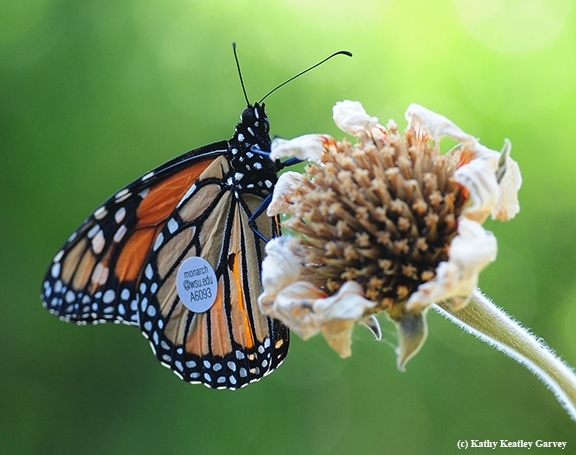
This male monarch, released by citizen scientist Steve Johnson of Ashland on Aug. 28, 2016, fluttered into Vacaville, Calif., on Sept. 5, a 457-kilometer journey. (Photo by Kathy Keatley Garvey)
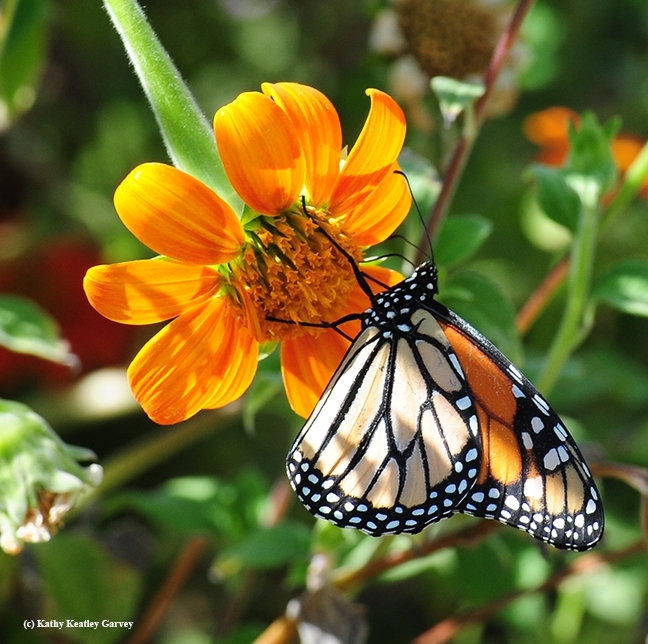
The male monarch, No. 6093, sips nectar from a Mexican sunflower, Tithonia on Sept. 5, 2016. It traveled 457 kilometers from Ashland to Vacaville. (Photo by Kathy Keatley Garvey)
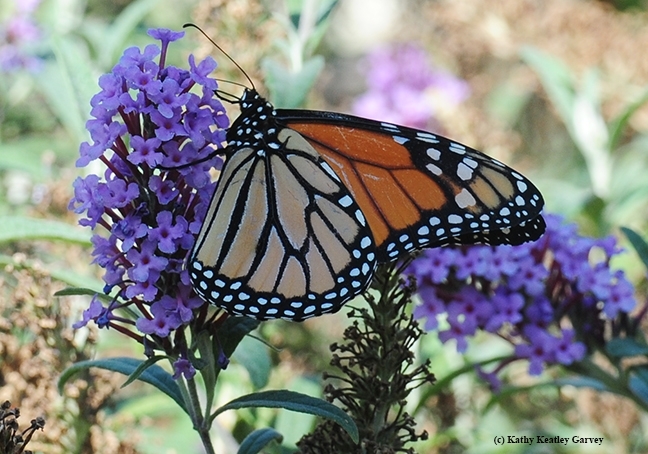
A feast! This migrating monarch from Ashland, Ore., sipped nectar from a butterfly bush, Buddleia davidii in Vacaville, Calif. (Photo by Kathy Keatley Garvey)
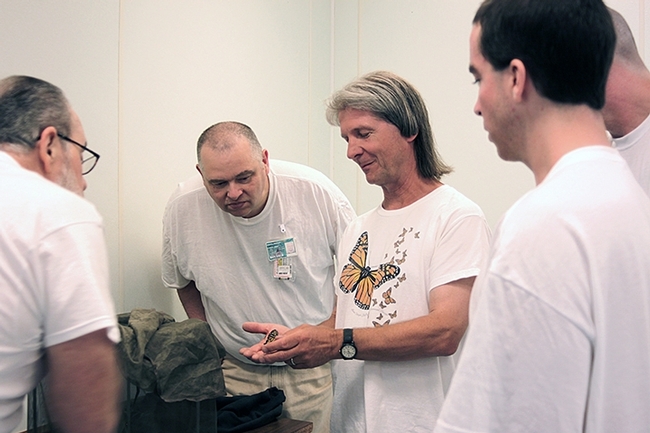
WSU entomologist David James, wearing a monarch t-shirt, with citizen-scientist inmates at Washington State Penitentiary, Walla Walla.
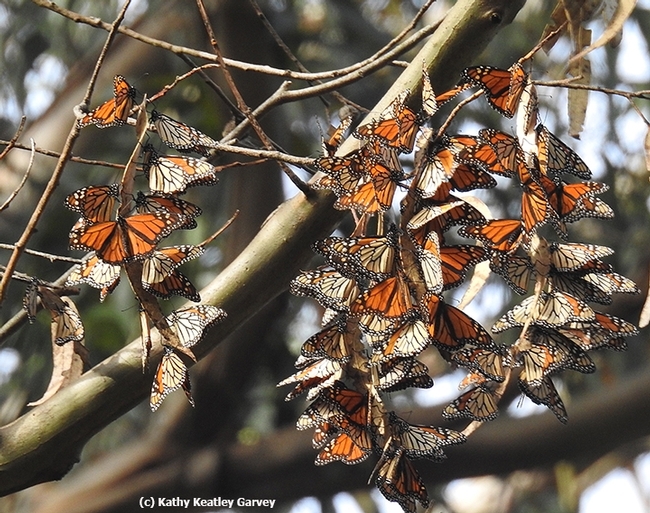
Monarchs overwintering in the Natural Bridges State Park, Santa Cruz, in 2016. (Photo by Kathy Keatley Garvey)

